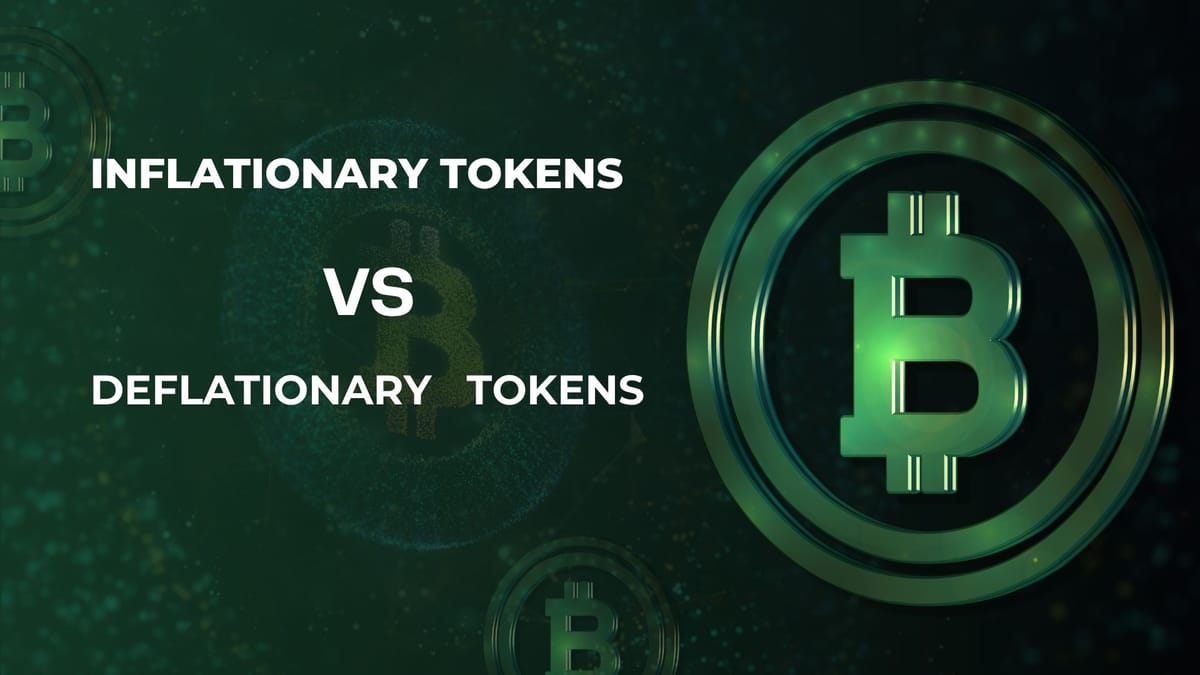Inflationary vs. Deflationary Tokens: What’s the Difference?

In the crypto world, not all tokens are designed the same. Some grow in supply over time, while others shrink. These are known as inflationary and deflationary tokens.
Understanding how a token’s supply changes is important — it affects price, value, and how a project works in the long run.
What Are Inflationary Tokens?
Inflationary tokens are tokens where the supply increases over time. This is similar to how governments print more money.
🔹 Example:
- Tokens are constantly being added through mining, staking rewards, or other methods.
- Projects may use inflation to reward users and encourage activity.
Pros:
- Incentivizes users to participate (like staking or validating)
- Supports network growth and security
Cons:
- Can reduce the value of each token over time (if demand doesn’t keep up)
- May lead to selling pressure if rewards are too high
Real-world examples:
- Ethereum (ETH) — after The Merge, ETH has both inflationary and deflationary features.
- Polkadot (DOT) — regularly mints new tokens for staking rewards.
What Are Deflationary Tokens?
Deflationary tokens are tokens where the supply decreases over time. This happens through burning — a process that permanently removes tokens from circulation.
🔹 Example:
- A small portion of every transaction is burned (destroyed).
- The total supply shrinks, making remaining tokens more scarce.
Pros:
- Can increase the value of tokens over time
- Creates scarcity, which can attract investors
Cons:
- Fewer tokens may limit rewards or growth incentives
- Extreme deflation can make tokens too expensive to use
Real-world examples:
- BNB (Binance Coin) — regularly burns a portion of its supply.
- Shiba Inu (SHIB) — has burn events to reduce total supply.
Comparison Table
| Feature | Inflationary Tokens | Deflationary Tokens |
|---|---|---|
| Supply Over Time | Increases | Decreases |
| Main Benefit | Rewards and participation | Scarcity and value growth |
| Risk | Value drop (if oversupplied) | Over-scarcity or low utility |
| Common Use Case | Staking, mining rewards | Long-term holding, investing |
Conclusion
The token supply model — inflationary or deflationary — can have a big impact on how a crypto project functions and how valuable its token becomes.
Neither model is “better” than the other — it depends on the project’s goals. A good investor or user should always check how a token's supply works before getting involved.


Comments ()